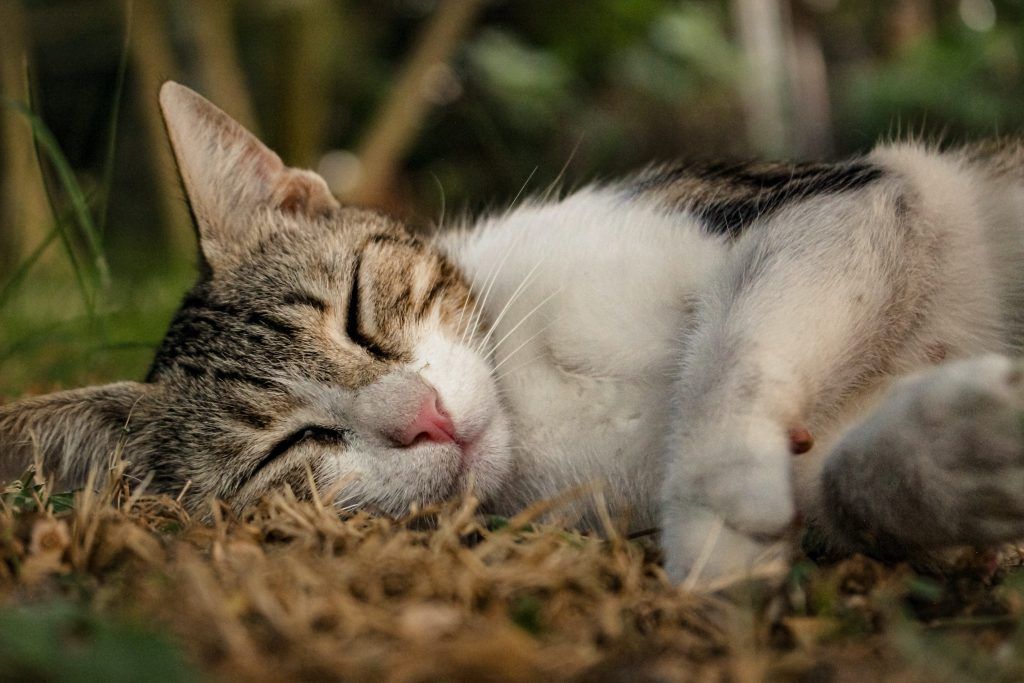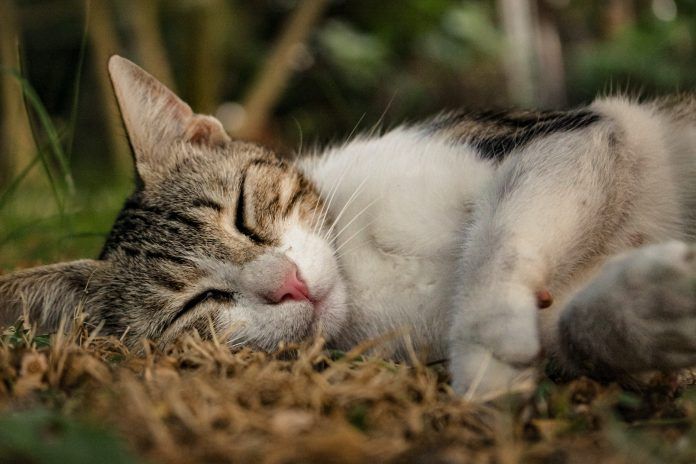As pet owners, it is our responsibility to provide proper nutrition for our feline companions. Understanding cats’ dietary requirements and preferences is key to ensuring their long-term health and wellbeing. When it comes to foods like pork, it’s important to understand how they fit into a balanced feline diet.
Cats have specific nutritional needs due to their carnivorous physiology. While their preferences may vary, there are essential nutrients they require. As obligate carnivores, cats thrive best on a meat-based diet high in protein and fat.
When introducing new foods like pork, it must be done gradually and safely to assess tolerance. This article explores the implications of pork in cat diets, potential benefits and risks, and how to responsibly feed felines for optimal health.
Understanding Feline Nutritional Requirements
Cats are obligate carnivores, meaning their bodies are adapted to eating primarily meat. Unlike omnivores like humans that can obtain nutrients from plants and grain, cats require a high level of bioavailable animal protein in their diet to thrive.
As true carnivores, cats need a diet high in protein and fat, but low in carbohydrates. Essential amino acids like taurine, arginine, cysteine and methionine are crucial for cats’ health and must be obtained through animal sources.
Cats also require more Vitamin A, B vitamins like niacin, choline and riboflavin, as well as minerals like calcium and phosphorus compared to vegetarian mammals. This makes meat the key component of feline nutrition.

Pork as a Potential Dietary Option
Many cat owners wonder if pork can be part of a healthy feline diet. While not traditional fare for cats, pork is safely consumed by humans and other omnivores. In moderation, pork can provide nutritional benefits to cats as part of a balanced diet.
Pork is a good source of protein, though lower than beef or poultry. A 3oz serving provides around 21g of protein. It also contains varying fat content, as well as vitamins and minerals like potassium, phosphorus, zinc and B vitamins. Lean cuts are best for cats.
While pork is nutritious for humans, it must be introduced cautiously for cats. Concerns like fat content, bones, additives and allergies need consideration before incorporating pork.
Health Benefits of Including Pork
When fed properly, pork can provide some nutritional upsides for cats. As a meat-based protein, pork delivers bioavailable amino acids that are vital for cats’ muscles, organs and bodily functions. It also supplies beneficial vitamins and minerals.
Pork is a complete protein containing all essential amino acids a cat needs. It is high in thiamin, selenium, zinc and vitamin B6 – nutrients that promote proper immune function, digestion, skin and coat health. Pork also provides the catabolic enzyme coenzyme Q10.
As an occasional treat or meal addition, nutritious pork can complement a cat’s regular diet. Lean, cooked pork gives cats’ energy levels a healthy boost.
Potential Risks and Concerns
While pork can offer benefits, it also carries some risks cats’ bodies are not adapted to handling. Fat content, bones, Additives and allergies are key considerations before feeding pork.
The high fat content in pork could lead to pancreatitis or other gastrointestinal issues in cats. Bones may also pose a choking hazard or damage a cat’s digestive tract. Additives like onions, garlic or spices are toxic for cats and must be avoided.
Allergies, while not common, can also occur. Signs include vomiting, diarrhea and skin irritation. Owners should introduce pork gradually while monitoring for any adverse reactions.
Types of Pork Suitable for Cats
Not all pork products are suitable for cats. Only fresh, properly cooked unseasoned pork should be fed to cats in moderation. Leaner cuts are better than high-fat options.
Recommended pork options include:
- Lean cuts like tenderloin, chops and roast.
- Fresh or thawed cuts, never frozen or re-frozen.
- Plain, unseasoned cuts without marinades, rubs or sauces.
Pork products to avoid giving cats include:
- High-fat cuts like belly, shoulder or ribs.
- Deli meats containing preservatives like ham or bacon.
- Pre-cooked, smoked, salted, seasoned or processed pork.
Sticking to simple preparations ensures additives and unwanted fat is kept to a minimum for cats.
Cooking Methods and Preparation
For safety, pork should always be thoroughly cooked before feeding to cats. Raw or undercooked pork may contain harmful bacteria like salmonella.
Recommended cooking methods include:
- Baking, broiling or grilling.
- Poaching or boiling.
- Slow cooking in a stew or soup.
- Microwaving small portions.
Other preparation tips include:
- Removing all visible fat, skin and bones after cooking.
- Cutting pork into bite-sized pieces for easier eating.
- Letting cooked pork cool to a safe temperature cats can tolerate.
Proper handling and cooking kills potential parasites and pathogens, making pork safe for cats to consume.
Pork Byproducts and Processed Foods
Many commercial cat foods contain pork byproducts like organ meats and bone meal. However, highly processed pork like bacon, ham and hot dogs are unsuitable.
Pork byproducts in cat food provide amino acids and nutrients cats need. However, they lack the moisture and protein quality of fresh pork meat. Too much byproduct meal could signal lower quality cat food.
Meanwhile, cured and seasoned pork products contain excess fat, salt, nitrites and other additives that are harmful to cats. Only plain, home-cooked pork should be fed to cats, not highly processed types.
Allergic Reactions and Sensitivities
While not common, cats can develop allergies to pork. This is likely due to the mammalian protein enzymes pork contains. Signs of pork allergy include gastrointestinal upset, skin irritation and respiratory issues.
Cats with existing poultry allergies could also react to pork, as the proteins are structurally similar. Any animal protein sources cats have not previously consumed may cause an allergic response.
To prevent adverse reactions, cat owners should slowly introduce a small amount of cooked plain pork. Allergic cats may need to avoid pork altogether under a vet’s guidance.
Monitoring Portion Sizes
Moderation is key when incorporating pork into a cat’s diet. As little as 1-2 bites of cooked pork 2-3 times per week is appropriate for most cats as an occasional treat. Too much can lead to obesity or diarrhea.
Ideally, pork should comprise no more than 10% of a cat’s total weekly calories. For a 10 pound cat, that equates to around 1 ounce of cooked pork at a time. Amounts can be scaled up proportionately for larger cats.
Pet owners should monitor their cat’s weight, energy needs and digestive health when adding pork to ensure proper caloric balance is maintained.
Introducing Pork into the Diet
When transitioning to any new food, cats need time to acclimate for digestive and tolerance reasons. Here are tips for gradually introducing pork:
- Start with a tiny amount like 1/4 teaspoon given with their usual food.
- Gradually increase the quantity every few days if no issues are observed.
- Mix plain pork pieces into food instead of replacing meals entirely.
- Watch for signs of digestive upset, lethargy or changes in litter box habits.
- Introduce different pork recipes and cook methods one at a time.
Taking it slow allows a cat’s system to adapt to digest and utilize pork properly.
Signs of Positive Health Effects
When added to a cat’s diet correctly, pork can have beneficial impacts observed through:
- Increased energy, activity levels and playfulness.
- Healthy skin and lustrous, soft coat from protein and oils.
- Improved muscle tone and weight maintenance.
- Regular bowel movements and lack of gastric distress.
- Clear eyes, nose and breathing.
These are signs pork is being tolerated well and contributing to the cat’s overall vitality.
Signs of Negative Reactions
Some cats may not tolerate pork well. Cat owners should discontinue pork and call their vet if they notice:
- Decreased appetite or refusal to eat.
- Vomiting, diarrhea, constipation or smelly stools.
- Excessive shedding, hair loss or skin irritation.
- Sneezing, congestion or respiratory issues.
- Fatigue, lethargy or hiding behavior.
These could indicate an undiagnosed allergy or intolerance to pork developing.
Consulting a Veterinarian
Before making any major dietary changes, it’s best to consult your cat’s veterinarian. They can provide tailored advice based on the individual cat’s health status, life stage and nutritional needs.
A vet can:
- Assess if the cat has any pre-existing conditions that require a specialized diet.
- Recommend appropriate portion sizes and feeding frequency for the cat.
- Suggest the best recipes, cuts and cooking methods of pork to try.
- Monitor the cat’s health as pork is introduced and address any concerns.
Following a vet’s dietary guidelines can prevent complications when transitioning to new food items.
Balancing Pork with Other Foods
For ideal nutrition, pork should not make up the entirety of any cat’s diet. A variety of proteins, as well as vitamins from other whole foods are needed.
Rotate pork with poultry, fish and red meats like beef, lamb and goat. Also include cooked egg yolks, dairy like yogurt or cottage cheese, organ meats and bone broth.
Balanced homemade meals with wholesome carbs like sweet potatoes or pumpkin help round out the diet. This variety ensures nutritional gaps are filled.
Homemade Pork Treats for Cats
Pet owners can prepare simple pork treats at home to tempt their feline’s palate while controlling ingredients. Consider recipes like:
- Pork jerky strips made from lean tenderloin baked at 200°F.
- Pork broth ice cubes to help hydration.
- Meatballs combining ground pork, egg and whole wheat breadcrumbs.
- DIY dental treats from compressed pork bits and vegetable glycerin.
Home cooking provides options without unwanted additives like sugar, salt, onions and garlic. Customizing treats allows catering to a cat’s preferences.
Common Misconceptions about Feline Diets
Many false claims exist surrounding cats and pork, including:
- Myth: All human foods are safe for cats. Fact: Many foods like chocolate, onions, grapes etc. are toxic to cats.
- Myth: Cats can thrive on vegetarian diets. Fact: Cats need meat-based protein to survive.
- Myth: Raw pork is fine for cats. Fact: Uncooked pork may contain parasites and bacteria.
- Myth: Pork bones are safe for cats. Fact: Cooked bones splinter and pose internal injury risks to cats.
Distinguishing myths from facts is key to making sound feline dietary decisions, including about pork.
Summary of Key Considerations
To recap, here are the top considerations around incorporating pork into a cat’s diet:
- Pork offers protein, vitamins and minerals, but is not essential for cats’ basic nutrition.
- Introduce new foods gradually while monitoring for food intolerances.
- Cook pork thoroughly and use lean, unseasoned cuts for cats.
- Limit portion sizes to occasional small treat amounts.
- Balance with other animal proteins and foods for a nutritionally complete diet.
- Consult a vet, especially for cats with health conditions or allergies.
Using pork safely and selectively can diversify a cat’s diet. But a meat-based diet is vital for cats to thrive.
Conclusion
In moderation, unseasoned cooked pork can provide a beneficial nutritional boost for cats. It introduces added protein diversity alongside conventional options like poultry and beef. Pork should always comprise just a small part of a balanced feline diet.
With proper precautions like thorough cooking and portion control, lean pork can be included as an occasional treat without adverse effects for most healthy cats. As obligate carnivores, felines require quality animal proteins like pork, in combination with other meats and nutrients. By educating ourselves as pet owners, we can feel confident our diet choices align with cats’ best interests.

